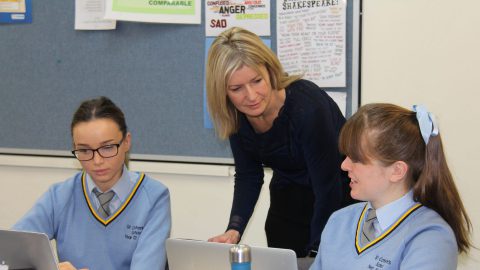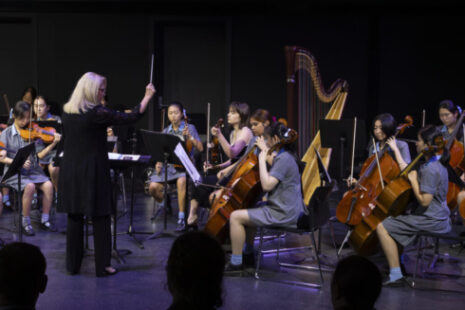Encouraging a Thinking Classroom

In any classroom at St Catherine’s School you will find the traditional teaching and learning practices in play, that is; explicit teaching of concepts mandated by the subject curriculum. It is crucial that students have an understanding of these concepts, as they provide the foundation for future learning. You will also find teachers clearly encouraging students to become critical thinkers. For students to truly engage with the subject matter and for the concepts to become meaningful, critical thinking routines are a key element of classroom teaching and learning.
Late in 2016, I was fortunate to attend a conference, which focused on critical and creative thinking. As an educator I was reminded that pedagogy is not merely the action of teaching (which itself, can easily be misinterpreted as the transmission of information). Rather it is the art and science of educating children, focusing on the relationship between teaching and learning, acknowledging that skilful teacher practice is more likely to result in meaningful and sustained learning.
In addition, curriculum refers to documented learning outcomes (knowledge, skills, attitudes, values, behaviours) that are considered important so that young people can make sense of, and participate fully in the world around them. Loughran (2006)
How does a critical thinking class evolve and what does it look like?
Essentially, it requires the teacher to open a dialogue to encourage students to explore possibilities beyond their own. Imagine a classroom where students are working collaboratively, as well as independently, using a range of resources. Imagine the same classroom where the interactions among students, and with their teacher, are focused on making sense of the world, exploring alternative approaches to solving problems, and defending, confirming and verifying possible solutions. In this thinking classroom students are challenged, they are exposed to real life context, presented with powerful questions and have ‘fit minds’.
Why is real life context an important factor in teaching or encouraging critical thinkers?
A number of researchers have highlighted both the potential and challenges in creating or selecting meaningful ‘real world’ contexts for teaching and learning. A context that interests and motivates one student might hold no interest for another. Therefore, while it is important that local context, family backgrounds, characteristics, and interests when selecting ‘real world’ context are considered there is also merit in posing challenging ‘real world’ tasks that are at least imaginable and might expand students’ experiences.
Powerful questions are those where:
- There is provocation;
- There is a level of complexity to contend with;
- There may not be an answer (yet);
- There may be more than one answer;
- There can be productive discussion, if not fierce debate.
Students with ‘fit minds’ learn and try hard for their own sake and are resilient. They:
- tend to have a resilient response to failure;
- remain focused on mastering knowledge and skills even when challenged;
- do not see failure as an indictment on themselves; and
- believe that effort leads to success.
Equipped with this knowledge of critical thinking and reflecting back on my opening paragraph, I consider the study of Business Management. The curriculum states that students are required to study the decision of management to manufacture overseas and its subsequent impact on business, consumers, government and other stakeholders. An example of the perspective offered to students is this: Businesses benefit from overseas manufacturing due to lower costs of production (the primary motivation), consumers also reap some benefit as lower costs of production may result in lower prices. While students, with guidance from their teacher can simply learn and recall this information, is it meaningful? Is it thought provoking? Not really.
So, students explore with ‘real world’ context the impact of businesses that manufacture offshore. Using their understanding of the concepts that they have learned, students are required to consider the following question:
Is it okay to purchase a $5.00 t-shirt from a low cost department store?
Not only is this this question thought provoking, but there is a complexity to the question that sparks discussion with a wide range of ideas and opinions from students about what is right and what is not. While not all of the ideas and perspectives that students present can be used to formulate a response in a piece of assessment the lesson is meaningful and memorable and so too is the content!




